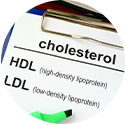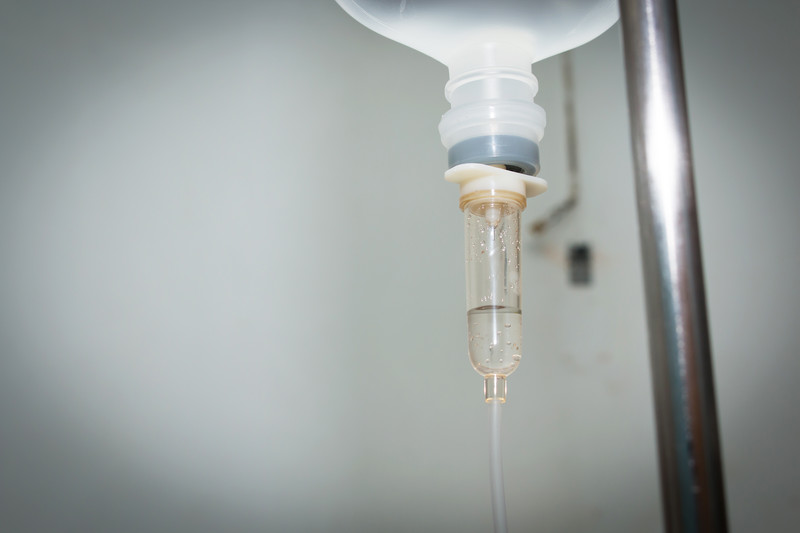A few years back, researchers started to understand that drug Naltrexone, used to help combat drug dependency and to assist recovering alcohols remain in recovery, could assist and enhance the immune system in battling chronic immune disorders.
In 1985, Bernard Bihari, MD, a doctor whose work included treating AIDS and HIV patients, discovered beneficial effects of a much smaller dose of Naltrexone or “Low-dose naltrexone.” When reduced to doses ranging from 0.5mg to 9.0mg daily, Naltrexone can modulate the immune system and may provide relief to those suffering from autoimmune diseases, chronic pain, mental health challenges, and inflammation.
Over the past ten years, there has been a growing body of evidence that the body’s endorphins (naturally occurring opioids) have a crucial role in regulating the immune system and providing pain relief. Low-dose naltrexone’s blockade of opioid receptors has been shown to upregulate endorphin production. Low-dose naltrexone’s blockade of Toll Like Receptors is believed to contribute to the anti-inflammatory and immune dampening effects.
A March 2018 study in the journal Pharmacotherapy, (1) tested the effectiveness of Naltrexone in treating chronic, complex inflammatory diseases in people who suffered great impact on their quality of life.
The researchers point out that: “Low-dose naltrexone has been used off-label for treatment of pain and inflammation in multiple sclerosis, Crohn’s disease, fibromyalgia, and other diseases.” This was not what Naltrexone was originally indicated for. Naltrexone is a mu-opioid receptor antagonist approved by the the U.S. Food and Drug Administration for opioid and alcohol dependence. (The drug is given to alcoholics to prevent recurrence, to people who have become addicted to opioids to help them off their dependence of the drugs).
As pointed out in this study, doctors have speculated that lower than standard doses of naltrexone (those given in incidence of dependence) inhibit cellular proliferation of T and B cells and block Toll-like receptor 4, resulting in an analgesic and anti-inflammatory effect. (In simple terms, in low dose Naltrexone can work as an anti-inflammatory). They also point out in this study that not every patient will benefit from the treatment and doctors need to educate themselves in the realistic expectations of the treatment and the benefits for their patients.
The key to success in using low-dose naltrexone is an understanding that optimal dosing is ultimately patient specific and is not dependent on a set protocol. In other words, it is an individualized treatment that may require a varied dosing strategy.
Some patients find success very quickly, while others need to try a variety of dosing strategies, which may take up to several months to achieve success. Therefore, it is critical to work with a provider knowledgeable in strategies that can help ensure success with Low-dose naltrexone. Dr. Allan Magaziner has found Low-dose naltrexone to be an extremely effective tool in helping his patients on their journey to wellness.
Possible benefits of treatment:
Please note that not every patient will benefit:
For more than 30 years the Magaziner Center has been at the forefront of providing innovative intravenous IV nutrients to thousands of patients. We have found that many individuals lack the necessary nutrients to prevent disease and stay healthy and vibrant. Whether a patient is simply struggling with short-term hydration issues or facing a long chronic disease, IV Therapy can help.
Our custom treatments are designed to stimulate the immune system, reduce inflammation, assist in cellular healing, and detoxify the body of unwanted pollutants and much more.
NAD + IV therapy regenerative therapy holds a wide range of benefits. Each session second-last about 60 to 90 minutes and patients are able to return to their normal activities immediately afterwards. This innovative therapy works on a cellular level and provides numerous complex benefits. NAD plus IV therapy works by delivering the oxidized form of a coenzyme called nicotinamide adenine dinucleotide NAD+ directly into the bloodstream. NAD+ is used by the body to carry out a wide range of functions and delivering it through an IV allows more of the coenzyme to be absorbed by the body.
When given IV, it avoids the digestive system ensuring the NAD+ coenzyme doesn’t get broken down before it reaches the cells that need it most. Because the NAD+ coenzyme is utilized in a variety of processes within the body.
There are many benefits associated with NAD+ IV therapy.
The following is a list of some of the major benefits of NAD+ IV therapy and how this treatment is helping a diverse group of patients achieve their health and wellness goals.
NAD plus+ IV Therapy may help:
Aiding in addiction recovery
Reduce pain
Improve mental clarity
Boost memory
Facilitate brain regeneration
Reduce symptoms of depression
Boost energy
Improve athletic performance
Weight management
Reverse signs of aging
Low dose naltrexone has gained popularity as an off-label treatment
In October 2019 a paper published in The American journal of hospice & palliative care (2) wrote:
“Pain can have a devastating effect on the quality of life of patients in palliative medicine. Thus far, majority of research has been centered on opioid-based pain management, with a limited empirical evidence for the use of nonopioid medications in palliative care. However, opioid and nonopioid medications such as nonsteroidal anti-inflammatory drugs have their limitations in the clinical use due to risk of adverse effects, therefore, there is a need for more research to be directed to finding an alternative approach to pain management in comfort care setting.”
The purpose of this (paper) is to discuss a potential new drug that would adequately alleviate pain and enhance quality of life without significant risks of adverse effects that would limit its use. That drug is Naltrexone.
Naltrexone, when used at standard doses of 50 to 150 mg was initially intended for use in opioid and alcohol use disorders. However, it was discovered that its use in low doses follows alternate pharmacodynamic pathways (it does different things than it was originally intended to do) with various effects.
When used in doses of 1 to 5 mg it acts as a glial modulator with a neuroprotective effect via inhibition of microglial activation. (This means that is can help people with inflammatory pain from multiple sclerosis or neurologic pain.)
It binds to Toll-like receptor 4 and acts as an antagonist, therefore inhibiting the downstream cellular signaling pathways that ultimately lead to pro-inflammatory cytokines, therefore reducing inflammatory response. (This means it can help prevent inflammation and provide pain relief).
“Low dose naltrexone has gained popularity as an off-label treatment of several autoimmune diseases including multiple sclerosis and inflammatory bowel disease, as well as chronic pain disorders including fibromyalgia, complex regional pain syndrome, and diabetic neuropathy. Low-dose naltrexone may also have utility in improving mood disorders and the potential to enhance the quality of life.”
Helping people with chronic pain
A December 2020 study (3) evaluated the effectiveness of low-dose naltrexone in the management of chronic pain conditions and to determine its potential use in orofacial (dental) pain management. In this study the researchers searched existing studies to offer an overall review. After compiling their findings the authors issued this statement: “Low-dose naltrexone provides an alternative in medical management of chronic pain disorders as a novel anti-inflammatory and immunomodulator. It can offer additional management options, as orofacial pain conditions share characteristics with other chronic pain disorders.”
In an accompanying press statement issued February 15, 2021 by the University of Michigan, lead researcher Elizabeth Hatfield, a clinical lecturer in the Department of Oral and Maxillofacial Surgery and Hospital Dentistry at the university said: “We found a reduction in pain intensity and improvement in quality of life, and a reduction in opioid use for patients with chronic pain.” said Hatfield, who hopes to initiate a randomized control trial of low dose naltrexone. Further, “Low-dose naltrexone begins to address the cause of pain and not just mask it, which allows us to better target diseases causing chronic pain, as well as potentially consider pain control outside of opioid use,” Hatfield said.
It is best used on centralized pain disorders, conditions where the nervous system is in that hyperexcited state, Hatfield said. Those conditions include myalgia, complex regional pain syndrome and temporomandibular joint disorders, Low-dose naltrexone is inexpensive and has few side effects. However, it’s not an option for people who use alcohol or opioids regularly.
Low-dose naltrexone has shown more than promise and should be further investigated in clinical practice
An August 2020 paper (4) followed up this research with the simple statement:
“We review(ed) the evidence that Low-dose naltrexone has shown more than promise and should be further investigated in clinical practice.”
For more than 30 years, the Magaziner Center has been at the forefront of providing innovative intravenous IV nutrients to thousands of patients. We have found that many individuals lack the necessary nutrients to prevent disease and stay healthy and vibrant. Whether a patient is simply struggling with short term hydration issues or facing a long chronic disease, IV therapies can help.
Our custom treatments are designed to stimulate the immune system, reduce inflammation, assist in cellular healing and detoxify the body of unwanted pollutants.
IV treatments help combat digestive issues, remedy excessive alcohol intake and improve the effects of medicinal treatments used to help serious health conditions. Our infusions help with the absorption of key vitamins, minerals, amino acids and other nutrients. Some of the many conditions that we successfully treat with IV therapy include:
– Heart disease
– High blood pressure
– Macular degeneration
– Lyme disease
– Auto-immune disease
– Chronic fatigue/fibromyalgia
– Excess heavy metals/chemical overload
– Asthma
– Cancer support
Our center also specializes in chelation therapy, a safe, effective, and relatively inexpensive intravenous treatment that may restore healthy blood flow and improve circulation without the need for surgery or other invasive procedures and is also used for the removal of heavy metals such as lead, cadmium, mercury and arsenic.
We are incredibly proud of our well established IV therapy and hydration department. Come drip with us and count yourself among the thousands of patients we have helped restore to improved health and vitality.
References
1 Patten DK, Schultz BG, Berlau DJ. The safety and efficacy of low‐dose naltrexone in the management of chronic pain and inflammation in multiple sclerosis, fibromyalgia, Crohn’s disease, and other chronic pain disorders. Pharmacotherapy: The Journal of Human Pharmacology and Drug Therapy. 2018 Mar;38(3):382-9.
2 Trofimovitch D, Baumrucker SJ. Pharmacology update: low-dose naltrexone as a possible nonopioid modality for some chronic, nonmalignant pain syndromes. American Journal of Hospice and Palliative Medicine®. 2019 Oct;36(10):907-12.
3 Hatfield E, Phillips K, Swidan S, Ashman L. Use of low-dose naltrexone in the management of chronic pain conditions: A systematic review. The Journal of the American Dental Association. 2020 Dec 1;151(12):891-902.
4 Kim PS, Fishman MA. Low-dose naltrexone for chronic pain: update and systemic review. Current Pain and Headache Reports. 2020 Oct;24(10):1-8.





































Recent Comments